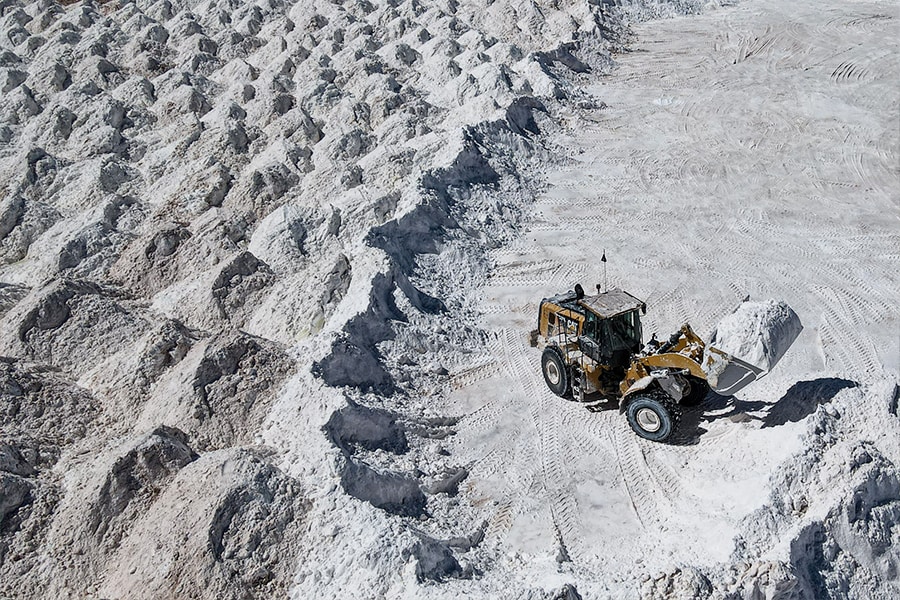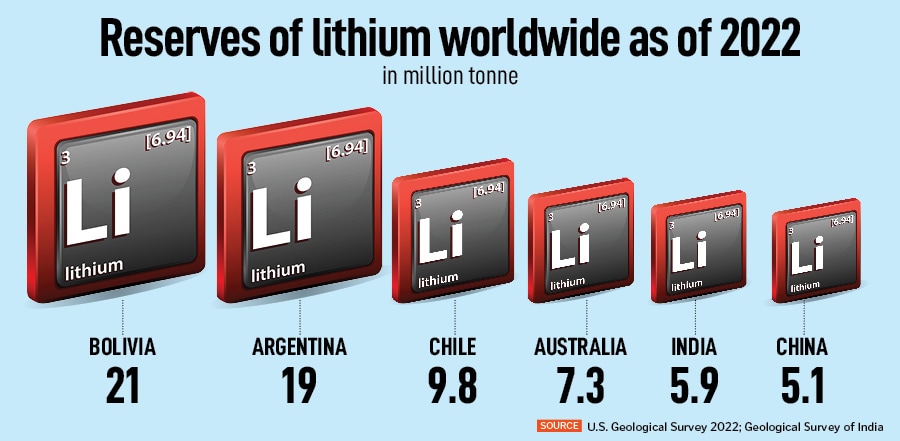
India has lifted the ban on lithium mining. Why?
Lithium-ion batteries are majorly used in EVs. With the recently discovered lithium resources, India could be looking at a massive opportunity, but experts say environmental concerns must be kept in mind
 A lithium mining machine moves a salt by-product at the mine in the Atacama Desert in Salar de Atacama, Chili; Image: Lucas Aguayo Araos/Anadolu Agency via Getty Images
A lithium mining machine moves a salt by-product at the mine in the Atacama Desert in Salar de Atacama, Chili; Image: Lucas Aguayo Araos/Anadolu Agency via Getty Images
On Wednesday, the Centre announced that it has lifted the ban on lithium mining, along with five other minerals. The Cabinet approved the amendment in the Mines and Minerals (Development and Regulation) [MMDR] Act. As a result, now private companies can also mine these six minerals.
Around February, approximately 5.9 million tonnes of lithium resources were found in the Salal Haimana area of Reasi district in Jammu & Kashmir, as per the Geological Survey of India. In May, media reports suggested that lithium resources were traced in Rajasthan's Degana as well. The lithium found in Jammu & Kashmir is supposedly of high quality—a grade of 500 ppm, compared to the normal grade of 200 ppm, claims India's mining secretary.
As the world moves towards more sustainable fuel options, the significance of lithium-ion batteries has increased dramatically. Lithium-ion batteries are known for their use in electric vehicles (EVs); reports suggest EVs will account for close to 60 percent of new car sales by 2030. The batteries used in EVs require a significant amount of lithium; for instance, the battery of a Tesla Model S uses around 12 kg of lithium. Additionally, lithium-ion batteries also have use cases in many other electronic products.
Industry experts reckon that the ability for private companies to sustainably mine lithium could be a game changer. “Allowing private companies to participate will result in best-in-class technologies being used for exploration, mining and further refining. The main benefit, though, will be the development of a local battery materials refining ecosystem, which will help lower costs and develop IP, along with other positive agglomeration effects,” says Rajat Verma, founder and CEO, Lohum Cleantech.
So far, India has always been import-dependent, not only for lithium, but also other minerals such as nickel and cobalt. Now, in order to reduce dependency on imports and grow further in the EV manufacturing space, experts reckon the government has lifted the ban on lithium mining.









